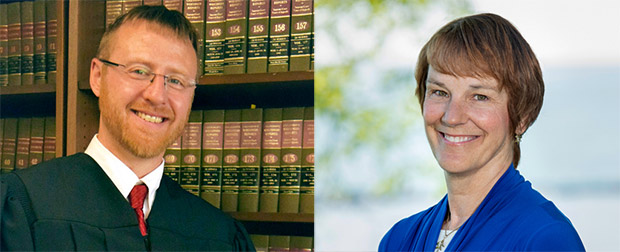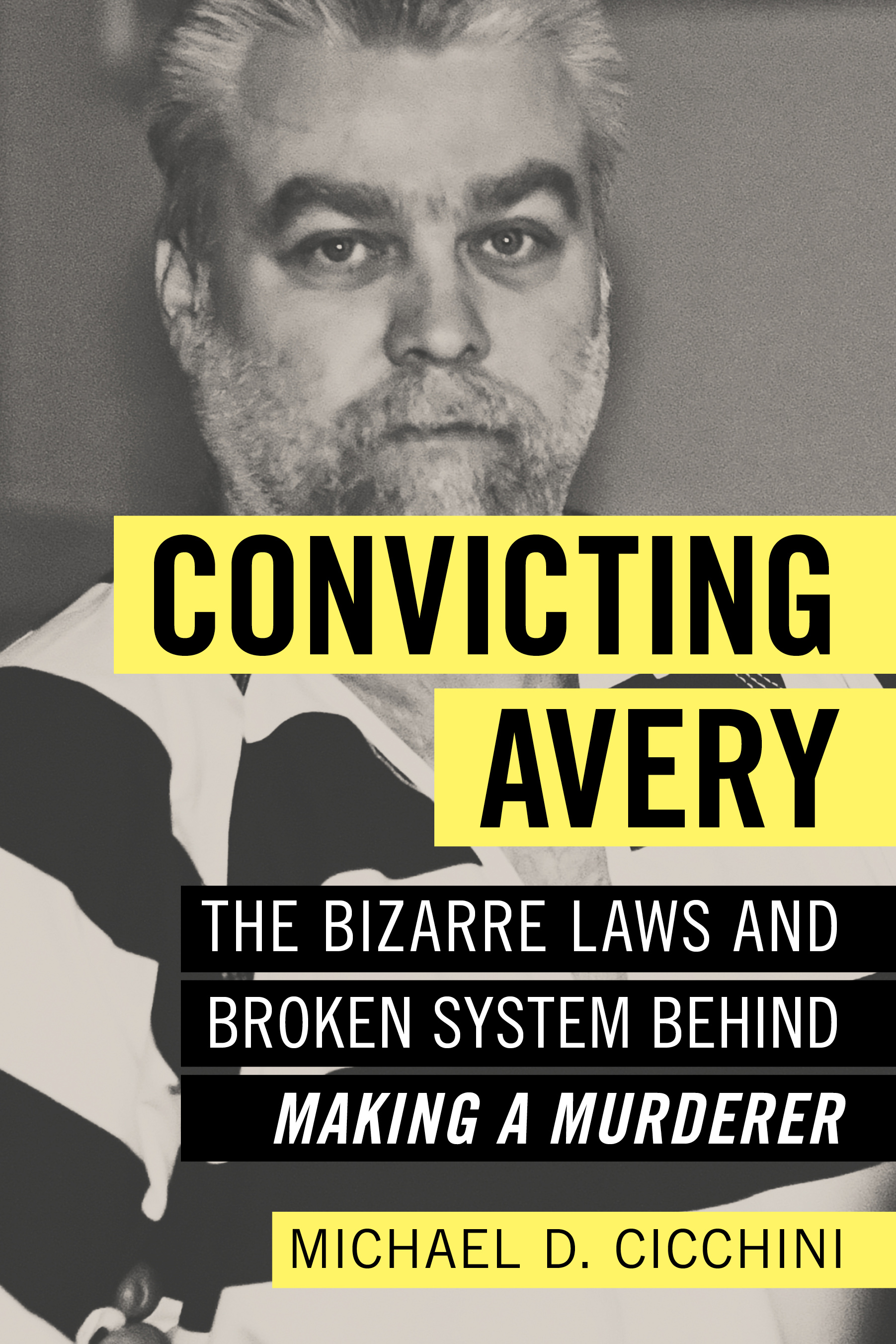Discrimination suit against firm provides warnings
By: dmc-admin//February 26, 2007//
 |
| Nate Cade
|
Dear Readers (ok, Dear Mom):
Last month I warned you about being careful with your associates and this month the tale of woe (with regard to associates) continues.
Nothing to report from Wisconsin, but in New York, the mega firm of Sullivan and Cromwell finds itself as a defendant in a discrimination lawsuit by one of its now-former associates. Aaron B. Charney filed a lawsuit against Sullivan and Cromwell last month alleging that he was discriminated against because he is gay.
In support of his complaint, Charney attached the Sullivan and Cromwell Partnership Agreement as an exhibit. He also attached several e-mails and other documents that described actions pertaining to specific clients, such as Kodak.
In response to the lawsuit, Sullivan and Cromwell fired Charney and promptly counterclaimed against him, alleging a number of breaches of New York’s ethical rules, including the use of personal and confidential client information and the potential theft of the partnership agreement. It also was revealed in court two weeks ago that Charney destroyed the hard drive to his personal computer where he had sent a number of emails from his Sullivan & Cromwell computer that contained confidential information.
Because this is the type of drama that would play out only on “The Montel Williams Show,” I will not take sides. However, this drama does provide two very valuable lessons for lawyers and their employers, and moreover, the fact that these same claims, if made in Wisconsin, could have a different outcome.
The first lesson from Charney’s case is to avoid any claim of discrimination whatsoever, because in Wisconsin, it can implicate your law license. You may not know it, but Wisconsin adopted a new Rule 8.4(i) as part of Ethics 2000. This new rule is not part of the ABA’s Model Rules, but it is a provision the Supreme Court recently adopted and is based on a similar rule in Minnesota.
Rule 8.4(i) states in part:
It is professional misconduct for a lawyer to:
. . .(i) harass a person on the basis of sex, race, age, creed, religion, color, national origin, disability, sexual preference or marital status in connection with the lawyer’s professional activities. Legitimate advocacy respecting the foregoing factors does not violate par. (i).
A question to contemplate is what is meant by “in connection with the lawyer’s professional activities.” Does it mean that any form of harassment while you are on the job, in any form, is a violation of 8.4(i), or does it have a deeper meaning, like any harassment by a lawyer at any time of day, even away from the job, violates this rule? Only OLR’s enforcement activities will give meaning to this phrase because Ethics 2000 and the Supremes have failed to give any meaning to this phrase.
Moreover, a bigger issue looms with respect to Rule 8.4(i). What standard of proof will the Office of Lawyer Regulation (OLR) believe is enough to prove the claim? It clearly is not the criminal standard of “beyond all reasonable doubt.” Is it the typical civil standard of “more probable than not?” Or is there a different standard that OLR will use? I cannot say, but I would not want to be the first lawyer to have to set the standard.
A final issue I have with 8.4(i), and for you to keep a close eye out for, is what steps will OLR take once a claim of discrimination is made? Meaning, will OLR adopt the findings of Wisconsin Equal Rights Division or the EEOC if a complaint was filed with either of these organizations, or will OLR conduct its own investigation to determine if the claim of discrimination has merit?
The Wisconsin Comment to 8.4(i) provides that “[w]hat constitutes harassment under paragraph (i) may be determined with reference to the anti-discrimination legislation and interpretive case law.”
While in theory it may seem like no big deal to the average Wisconsin practitioner, Rule 8.4(i) may have a profound impact on any attorney who also is an employer. This new Rule, without any Model Rule counterpart, may be used as both a sword and a shield against the Wisconsin lawyer. What will stop the enterprising claimant from not only seeking redress from EEOC or ERD, but also filing a complaint with OLR solely as a means of leverage to force a settlement of the discrimination claim?
A lawyer on the receiving end of a discrimination claim is probably better off settling the claim before the case winds itself through the legal system. After all, it is unclear whether OLR will investigate first before ERD or EEOC has conducted its investigation.
| Related Article
|
||
It is unclear how one defends one’s self with regards to a claim under Rule 8.4(i). And the final issue that I have with 8.4(i), and perhaps the most important, can an investigation under this particular new Rule of Professional Responsibility proceed without a witness (i.e. can the enterprising claimant who filed the complaint with OLR solely for leverage refuse to cooperate after settlement of the civil case)? Since the rule will not go into effect until July 1, only time will tell. I just know I don’t want to be on the receiving end of that first claim.
The second lesson from Charney’s case is to remember that no matter how mad you get at the judge, the lawyer on the other side, or your firm, an
y action you take you do so as a lawyer, and thus, the Rules of Professional Responsibility apply to you. Charney screwed up because of the means he employed when he filed his complaint.
In particular, Charney attached several confidential e-mails pertaining to clients. Charney claims that the reason he attached those e-mails, and the Sullivan and Cromwell Partnership Agreement, was to evidence his claims of discrimination and the fact that the Partnership Agreement did not have a particular way to punish a Sullivan and Cromwell partner for discrimination. Regardless of the reasons why he attached this material to his complaint, there is no doubt that he has violated multiple Rules of Professional Responsibility.
Charney clearly violated Rule 1.6, Duty of Confidentiality. While he violated other rules, his violation of Rule 1.6 is paramount. By filing client documents with the court, Charney has exposed himself to a potential reprimand or disbarment. There is no doubt that Charney could have filed the documents, to the extent he needed to use them to prove his case, under seal. The only way that an attorney can file confidential client documents without the client’s permission is for that lawyer to defend herself from a claim of malpractice, breach of fiduciary duty, etc.
That was not the case here, and Charney clearly filed his complaint to get the publicity. Maybe Montel will have him on as a guest soon.
Nate Cade is a partner practicing in litigation at Michael Best & Friedrich LLP, where he is a member of the firm’s Tort Liability Practice Group. He can be reached at [email protected].
Legal News
- Chicago man sentenced to prison after being caught with ‘Trump Gun’
- FTC bans non-competes
- Gov. Evers seeks applicants for Dane County Circuit Court
- Milwaukee man charged in dismemberment death pleads not guilty
- Democratic-led states lead ban on the book ban
- UW Madison Professor: America’s child care crisis is holding back moms without college degrees
- History made in Trump New York trial opening statements
- Prosecutor won’t bring charges against Wisconsin lawmaker over fundraising scheme
- Republican Wisconsin Senate candidate says he doesn’t oppose elderly people voting
- Vice President Harris to reveal final rules mandating minimum standards for nursing home staffing
- Election workers fear threats to their safety as November nears
- Former law enforcement praise state’s response brief in Steven Avery case
WLJ People
- Power 30 Personal Injury Attorneys – Russell Nicolet
- Power 30 Personal Injury Attorneys – Benjamin Nicolet
- Power 30 Personal Injury Attorneys – Dustin T. Woehl
- Power 30 Personal Injury Attorneys – Katherine Metzger
- Power 30 Personal Injury Attorneys – Joseph Ryan
- Power 30 Personal Injury Attorneys – James M. Ryan
- Power 30 Personal Injury Attorneys – Dana Wachs
- Power 30 Personal Injury Attorneys – Mark L. Thomsen
- Power 30 Personal Injury Attorneys – Matthew Lein
- Power 30 Personal Injury Attorneys – Jeffrey A. Pitman
- Power 30 Personal Injury Attorneys – William Pemberton
- Power 30 Personal Injury Attorneys – Howard S. Sicula









